Multicultural Trail
Duration: 3 - 4 hours
The location of Lublin at the cultural frontier between eastern and western Christianity, as well as on key trade routes which existed here in the early Middle Ages, meant that over the centuries the city has been characterised by multiculturalism. Its residents practiced various religions and a significant part of them spoke different languages.
Stop 1. - The Monument to the Union of Lublin
The Monument to the Union of Lublin on the Litewski square – an iron obelisk placed on the square in 1826 to commemorate the political event on a European scale which was the establishment of the Polish-Lithuanian Union in Lublin in 1569, known as the Union of Lublin. The last station of the Jagiellonian Trail of the Union of Lublin, which leads here from the castle, is located by the monument.
Stop 2. - The Evangelical-Augsburg Church of the Holy Trinity
The Evangelical-Augsburg Church of the Holy Trinity, situated between the streets of Krakowskie Przedmieście, Ewangelicka and I Armii Wojska Polskiego, is the only church of its type in the region of Lubelszczyzna. The classicist building was constructed between 1785-88 according to the design of F. A. Zylchert, after obtaining approval of King August Poniatowski. The church’s furnishings come from the Orthodox church in Piaski near Lublin which does not exist anymore (its ruins have been preserved).
It is worth paying attention to one of the largest collections of tin grave epitaphs in Poland and Europe. Precious gravestones of distinguished evangelicals are to be found in the church cemetery.
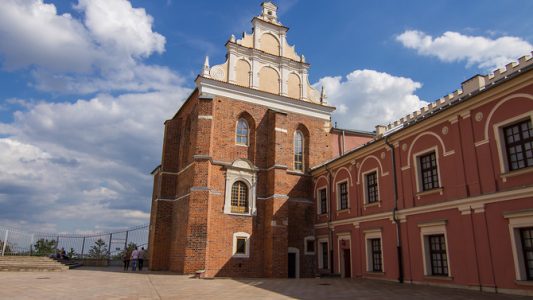
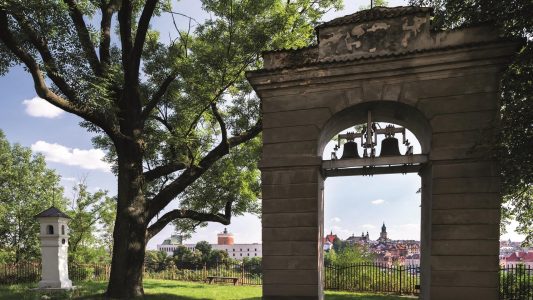
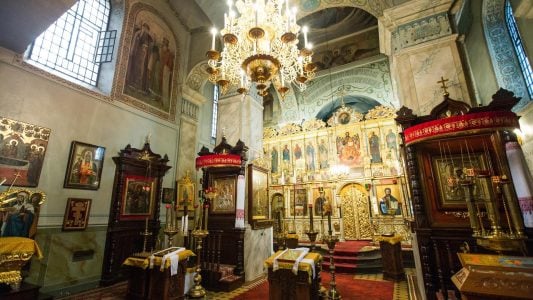
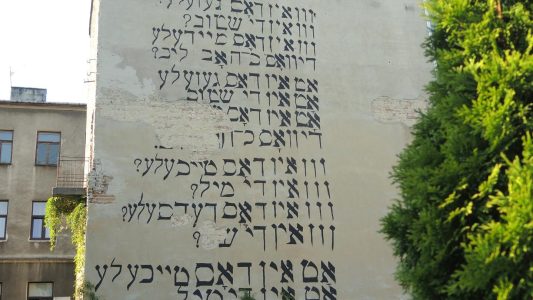
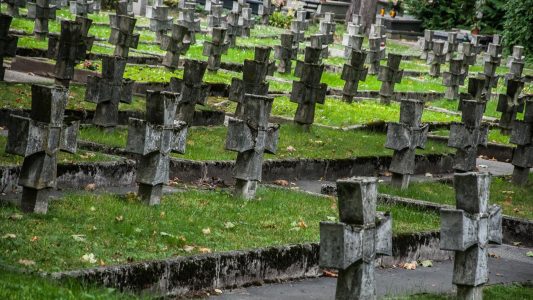
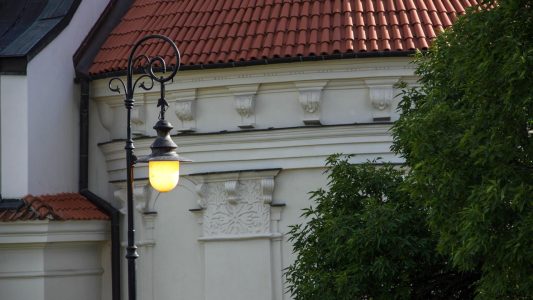
Stop 3. - Lubomirski Palace
Lubomirski Palace on the Plac Litewski, near Czartoryski Palace. Originally, it was the location of the residence of the Firlej family, next to which the Lithuanian nobility camped during the Union Parliament sessions in 1569. In the 17th century, the Lubomirski family ordered the conversion of the palace by the Dutch architect Tylman van Gameren, who gave the building its Baroque features.
Other owners of the Palace, the Sanguszko family from Lithuania, converted it between 1829-30 into a classicist residence following the design of Italian architect Enrico Marconi.
Stop 4. - The old Gothic Orthodox Church
The old Gothic Orthodox Church, currently the Roman Catholic church of St Josaphat in Zielona Street. The church, erected in 1786 by Orthodox Greek merchants, has kept its oriental shape. In the second half of the 19th century the Orthodox church was taken over by the Orthodox Patriarchate of Moscow (before, it belonged to the Patriarchate of Constantinople). Until recently the building mainly served Greek Catholics, i.e. the supporters of the Union of Brest.
Stop 5. - The Economic School Complex
The Economic School Complex named after August and Juliusz Vetter, located in Bernardyńska Street, is the grand, neo-Gothic edifice of a former school of economics founded between 1906-07 by Lublin industrialists known for their philanthropy – evangelicals of German descent. Inside, a memorial hall of the school’s traditions and patrons is located.
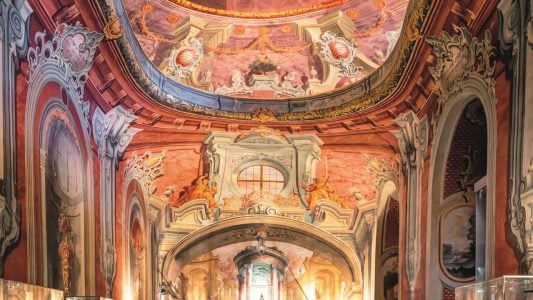
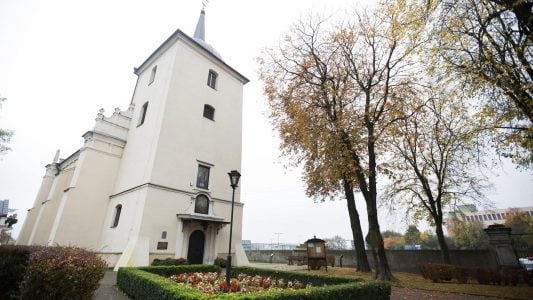
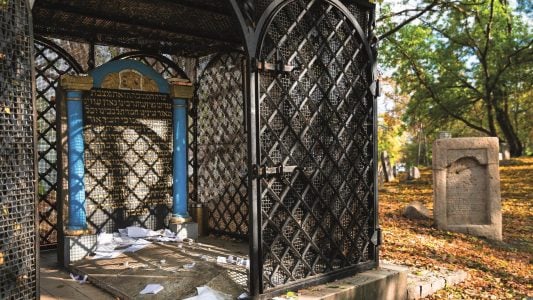

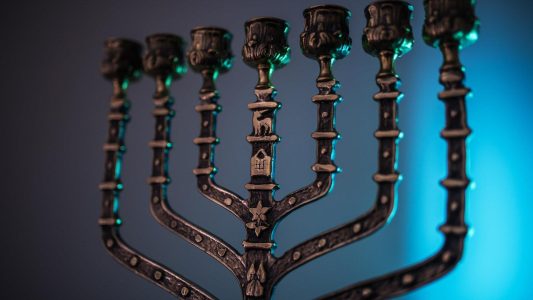
Stop 6. - The Cathedral Square
The Archcathedral Square in ul. Królewska. Its eastern facade features the grand structure of the archcathedral of St John the Baptist and St John the Evangelist – a former Jesuit church. It was erected between 1586-1625 following the design of Italian architects, J. M. Bernardoni and J. Bricci, in the style of late Renaissance and Baroque. The vault is decorated with a wonderful illusionistic polychrome by Józef Mayer, a painter representing the Silesian-Moravian art trend.
The oldest antique in the church is the 15th-century bronze font with an old German inscription: Hilf God Maria Berod (Help us God and Mary of Bread). In 1821, a portico with a terrace was added to the church, designed by Antonio Corazzi, an Italian architect residing in Poland. He was also the creator of the neo-Gothic Trynitarian Tower located nearby. Inside it houses the Archdiocesan Museum of Religious Art, while the terrace located at 40 m above the ground offers a great view of the beautiful landscape of Lublin and its surroundings.
Stop 7. - Rynek
Rynek, the Old Town main square with its well-preserved original architectural layout. Grand tenement houses with four facades are located around the market square; their owners were townspeople not only of Polish origin. It was also the residence of Germans, Jews, Italians, Russians, Armenians, Greeks, Hungarians, Frenchmen, and Scots. The Old Town Hall situated in the centre of the square served as the location of the Crown Tribunal from 1578 and the office of mayors between the 16th-17th century, among whom were also Italian, French, and German nationals.
While looking at the Gothic, Renaissance, Baroque, and Classicist architecture of the buildings around the market square and its surroundings, we can easily notice the influence of numerous art trends and cultures which came to Lublin from all over Europe. For instance, the classicist architectural design of the Crown Tribunal was created by the great architect of Italian descent, Dominik Merlini.
Stop 8. - Grodzka Gate
The Grodzka Gate, one of two gates situated within the curtain walls, originally Gothic but currently in the classicist style. It enabled communication between the Old Town and Podzamcze and was a traditional border between the Christian and Jewish districts. The gate houses “Grodzka Gate – NN Theatre” Centre – an institution that commemorates, among others, the presence and activity of Jews in Lublin. It is also Station no. 13 of the Heritage Trail of the Lublin Jews.
Stop 9. - Castle hill
The Castle Hill is the location where traces of an early Slavic settlement from the 6th-9th century can be found. A section of a tower of an old royal castle from the 13th century still stands, together with the Holy Trinity Chapel from the 14th century with the only fully preserved Russian-Byzantine polychromes in Poland. They are the greatest symbol of the multiculturalism of Lublin as a city open to influences of western and eastern civilisations. All tourist trails of Lublin meet at the Castle Hill.
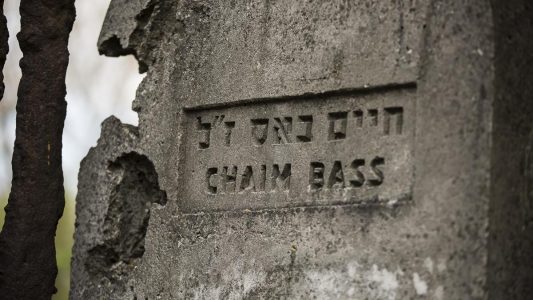
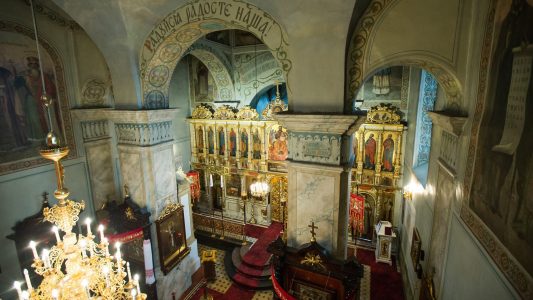
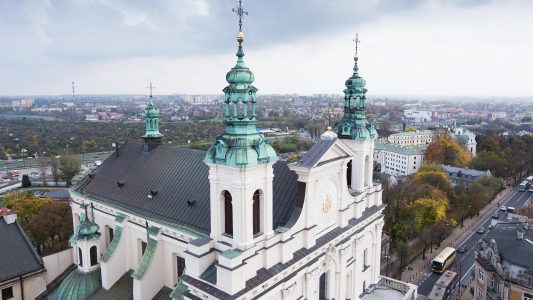
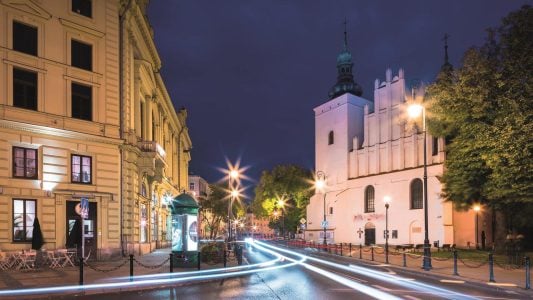
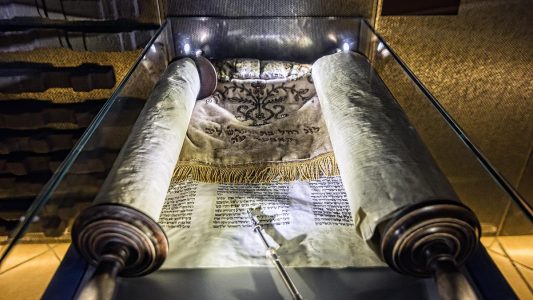
Stop 10. - The former location of a large synagogue complex
The former location of a large synagogue complex built pursuant to a privilege granted in 1567. It could accommodate around three thousand Jews praying simultaneously. The buildings were destroyed by the Nazis in 1942. Their location is commemorated by an obelisk and a metal bas-relief with an image of the Great Synagogue, Maharszalszul, as well as a board with information on the Heritage Trail of the Lublin Jews, which runs here.
Stop 11. - Orthodox Church of the Transfiguration of Jesus
The Orthodox Church of the Transfiguration of Jesus, located in Ruska Street between Staromiejskie and Czwartek Hills. It is an important example of the multi-denominational character of Lublin. The church was built and furnished between 1607-33. In 1638, King Władysław gave authority over the Orthodox church to Bishop Methodius Terleckyj from Chełm, who allocated it to Basilians, supporters of the Union of Brest.
Since 1875, the church has belonged once more to the followers of the Orthodox Church, currently serving as the cathedral of the Diocese of Lublin and Chełm located in Lublin. It features a great iconostasis, highly decorated and gilded, from around 1630. Other valuable movable assets include, among others, paintings of the Last Judgment and Dormition of the Mother of God.
Stop 12. - Czwartek
Czwartek hill is one of the loess promontories over the valley of the river Czechówka – the earliest settlement in Lublin dating back to the 6th-7th century. A market is located at its bottom which has existed for several hundred years, near which a trade route was located leading towards Lviv and Russia. In the 10th century the patron of merchants and tradesmen, St Nicholas, common to the eastern and western church, was also the patron of the settlement. The parish church of St Nicholas is situated here and was erected in the 16th century, according to the legend, in the location of a church from 986 said to have been founded by Mieszko I.
The view from Czwartek Hill of Podzamcze, the Old Town, and part of the city centre allows us to look at the outlines of sacred and secular architectural locations which help create the multicultural mosaic of Lublin. We can also see, amongst others: an Orthodox church, the castle with its tower and the Holy Trinity Chapel, Grodzka and Krakowska Gates, the Church of the Dominican Order as well as the Archcathedral and Trinitarian Tower.